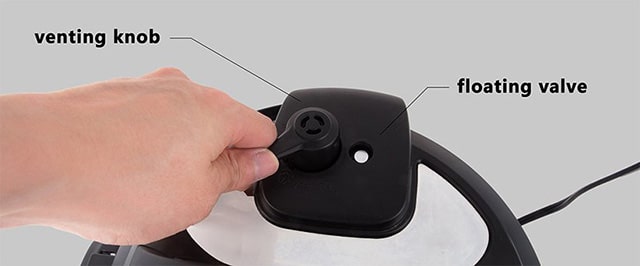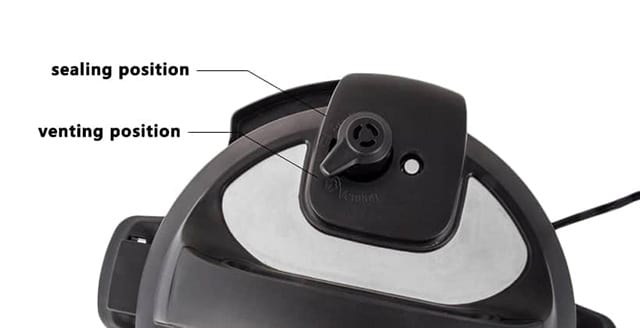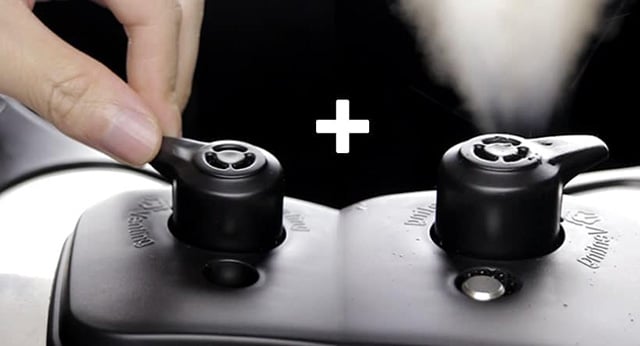How to use the Instant Pot Natural Steam Release Perfectly
As the name suggests, the Instant Pot Natural Release is a type of pot that releases pressure naturally after cooking.
When the food is cooked, the pot will make a beep that indicates the cooking cycle has already been finished. Depending on the recipe you follow, you can let the pressure be released naturally, quickly, or both.
This allows the cooker to naturally release the pressure for 10 minutes, and the remaining pressure will be released afterward.


Check out our new cookbook
Bitemybun's family recipes with complete meal planner and recipe guide.
Try it out for free with Kindle Unlimited:
Read for freeIn this post we'll cover:
What is Natural Pressure Release?
In cooking terms, Natural Pressure Release is more commonly known as the NPR. This means allowing the pressure inside the pot to naturally disperse.
The NPR will take place only after it’s finished cooking, and the valve of the cooker must be left shut. Then the pressure will be lowered even if you won’t do anything on your end. At this point, the instant pot will be switched to the Keep Warm setting, and the pressure will start to go down.
The amount of time that it will take for the pot to release the pressure will mainly depend upon the type of food you are cooking and the liquid that’s inside the cooker. However, it won’t produce any beep after it’s done, releasing the pressure.
It will only let the float valve flow, allowing you to open the cooker’s lid. But if you’re near the cooker, you should be able to hear the float valve drop.


Image Credit : pressurecookrecipes.com
What About the Quick Release?
On the other hand, the Quick Release Pressure is more commonly known as the QPR. This is the process of letting all the pressure from the pot to escape quickly. To do this, simply move the valve to the venting from the sealing. This way, you will release both pressure and steam.
When doing this, make sure that there’s no cabinet above the cooker or anything that will get hit directly by the steam. Also, keep your face and hands away for your safety.
How Much Time Does an Instant Pot Need to Naturally Release?
The time that it will take for the instant pot to release the pressure will depend on the ingredients of the dish you are cooking as well as the liquid that’s inside the cooker.
If the pot is completely full, it will take around 30 minutes for it to disperse the pressure. On the other hand, if the pot is not full and has only a small amount of liquid, it could disperse the pressure in as fast as 5 minutes!
If you are cooking roasts, then you definitely should apply the NPR or natural pressure release. You should allow enough time for the pot to naturally release the pressure, or you won’t achieve the tenderness that you’d want for your meat.
How Much Time Does It Need to Quick Release?
Generally, a quick-release function should release pressure fairly quickly. But as mentioned above, this will depend on how full the pot is and the amount of liquid that’s inside.
If the cooker is full, it will take around five minutes for the steam to escape before all the pressure is released.
The 10-Minute Natural Release

Image Credit : pressurecookrecipes.com
Some recipes require a combination of natural and quick pressure release. When it comes to this, you should let the pot stay for 10 minutes after the initial release and then move the valve towards venting.
This means letting some pressure to naturally dissipate and then letting the rest of the pressure to release quickly. This method is recommended if you are cooking a whole chicken or a pot full of soup.
This method helps prevent the foam from sputtering out the valve while also stopping the cooking process in a timely manner.
Turning the Instant Pot Off
There are those who will unplug the pot to allow for the natural release of pressure. Some people will leave the cooker plugged in. At this point, you’ll notice the display will show “L0:00”. The L here stands for elapsed time.
If you leave the pot plugged in, it will automatically switch to the “Keep Warm” mode. But take note that whether the pot is turned on or not, the keep warm setting won’t affect the amount of time it will take for the pot to release the pressure naturally.
It’s all basically up to you on what you prefer. Personally, I’d prefer for the pot to be plugged in so I can see for how long it has already been done.
First Thing You Should Do with Your Instant Pot
When you first receive your Instant Pot, the first thing you should do is to take time to read the guidelines set on the instruction manual that the pot comes with.
Then conduct a water test. After that, look for recipes that you can cook using the pot. There are tons of resources online that you can refer to for ideas on what to cook on your instant pot, so check them out.
Final Thoughts
If you like spending most of your time in the kitchen cooking delicious meals, then the Instant Pot Natural Release is worth giving a try.
But remember that it’s not like your typical cooking pot. You should know when to use the NPR or the QPR function in order to make the most out of your instant pot. But once you familiarize yourself with the proper way of using the Instant Pot, you’ll be able to cook several different types of dishes quicker and easier.
Check out our new cookbook
Bitemybun's family recipes with complete meal planner and recipe guide.
Try it out for free with Kindle Unlimited:
Read for freeJoost Nusselder, the founder of Bite My Bun is a content marketer, dad and loves trying out new food with Japanese food at the heart of his passion, and together with his team he's been creating in-depth blog articles since 2016 to help loyal readers with recipes and cooking tips.
